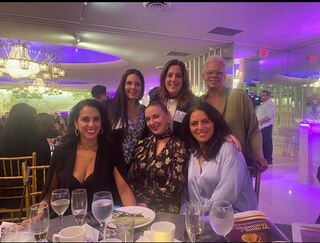Midlife
It's Cool to Care!
Do what you love to make the change you want.
Posted November 11, 2022 Reviewed by Hara Estroff Marano
Key points
- caring is cool
- make change by doing what you love
- midlife is a time to tap into your skills and expertise to make change
Janet Esagoff is a lawyer in her 50s who owns a busy law firm. She doesn't have a lot of down time, so most people wonder why, at the peak of her career, she is taking on a project to organize and unite a residential community of roughly 40,000 people. The short answer is: she cares. Janet lives in a suburban town that, postpandemic, has seen a lot of change, including the loss of retail stores and restaurants, heated town elections, and an explosion of negative posts about the town and its members on social media.
One day it dawned on Esagoff that she cares about her town, so why not step in and be the person to make the change she wants to see? If not her, who would? She set out to do the first thing she could do right away, something simple: a Facebook page called Destination Great Neck. Right away, a buzz started. Other people cared, too, and wanted to join her mission.
Four women (all midlifers) came forward to volunteer. Together, this group incorporated and formed the Board of Destination Great Neck. They were officially making caring cool. Talk of this group spread in the local gyms, over coffee, and on chat groups. They made it a very positive platform with caring at the core. The circle of care grew faster and larger than the Grinch's heart on Christmas day.

What made this group of six women care? Midlife. Yes, really, midlife!
Midlife offers an emotional life stage called generativity, and the core of this life stage is caring (McAdams, 1998). We are developmentally built to care, and midlife is when we get to express this. This isn't just theory. Research shows that participating in voluntary work is associated with positive health outcomes and caring engagement with meaningful connections in the community (Chong, 2013).
Caring isn't unique to Esagoff and those who joined her mission. People everywhere do this. And it makes them feel great —physically and emotionally. People are driven to become more engaged in the world outside themselves in midlife.
The theory is that we have the desire to give back so we can leave our mark on the world and really feel like our lives matter. This is easiest to do in midlife, when we've become confident in who we are, settled in our careers, and have the skills needed to accomplish tasks. It is a time in life when we are able to use the expertise we've honed for decades to make the changes we want to see. Midlifers care because it feels good for them and connects them to others more deeply. Midlife is also a trigger that propels individuals to action because it becomes clear that time is not infinite. There isn't time to wait.
There are examples of caring in film and literature. James Stewart's character George Bailey in Its a Wonderful Life was deeply passionate about his town. The movie depicts a character who realizes his caring changed the town and the residents for the better. His life mattered. George Bailey made an impact on the world. This is how it works in real life, too. We make a profound impact on the world when we care.
Caring is something anyone can do. It doesn't require a fancy degree or money. Midlife is the perfect time to exercise this muscle.
If you are searching for ways to care, here are three suggestions.
1. Volunteer: Check out volunteer.gov to find opportunities near you.
2. Mentor: Give back your expertise at mentorproject.org or mentoring.org
3. Philanthropy: Donate to your favorite charity, program or organization.
It's cool to care!
References
Chong, Rochelle, T. L., & Liu, S. (2013). Volunteerism and Positive Aging in Hong Kong: A Cultural Perspective. International Journal of Aging & Human Development, 77(3), 211–231. https://doi.org/10.2190/AG.77.3.c
McAdams, Hart, H. M., & Maruna, S. (1998). The anatomy of generativity. In Generativity and adult development: How and why we care for the next generation (pp. 7–43). American Psychological Association. https://doi.org/10.1037/10288-001


